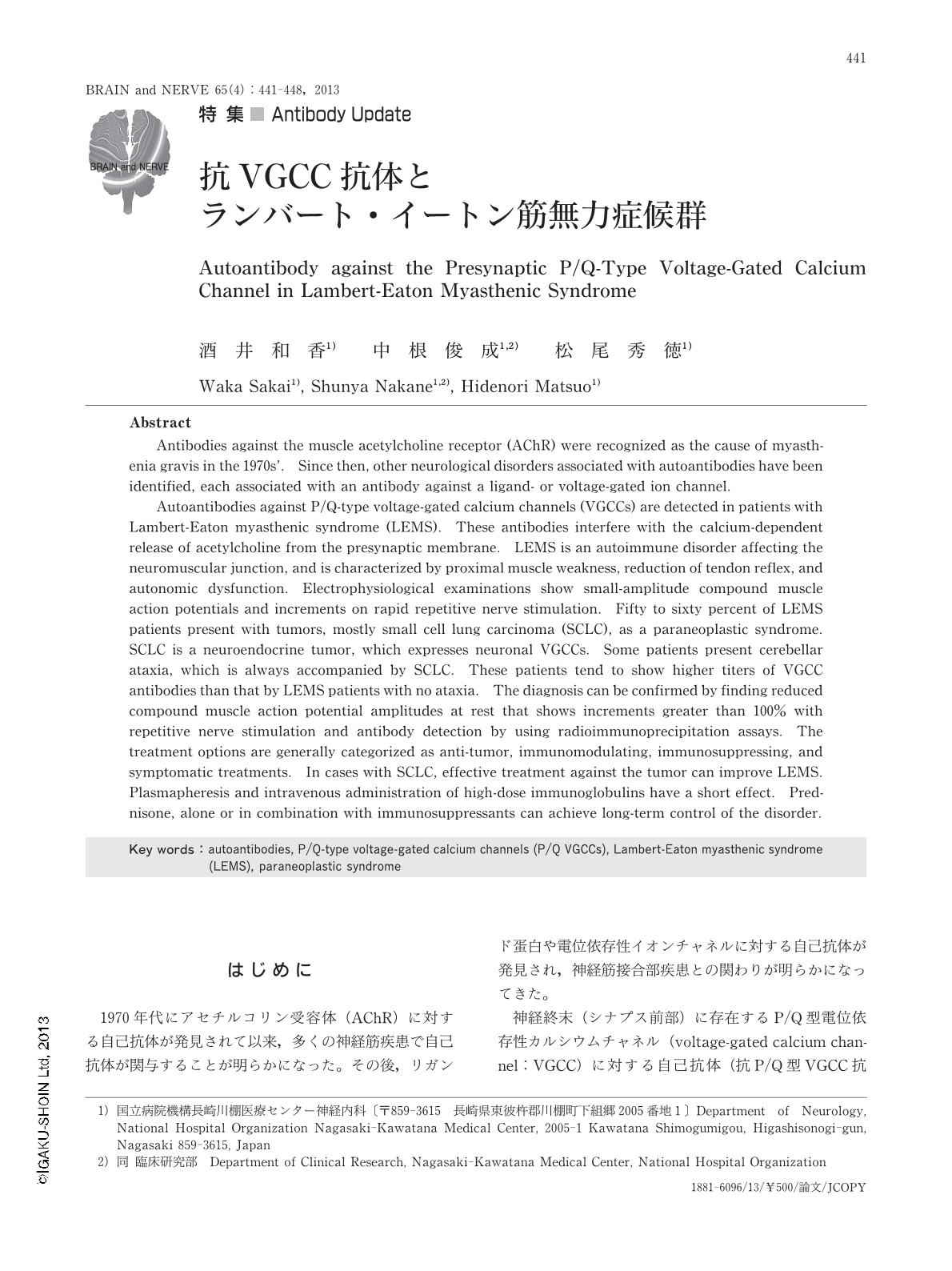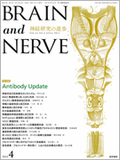Japanese
English
- 有料閲覧
- Abstract 文献概要
- 1ページ目 Look Inside
- 参考文献 Reference
はじめに
1970年代にアセチルコリン受容体(AChR)に対する自己抗体が発見されて以来,多くの神経筋疾患で自己抗体が関与することが明らかになった。その後,リガンド蛋白や電位依存性イオンチャネルに対する自己抗体が発見され,神経筋接合部疾患との関わりが明らかになってきた。
神経終末(シナプス前部)に存在するP/Q型電位依存性カルシウムチャネル(voltage-gated calcium channel:VGCC)に対する自己抗体(抗P/Q型VGCC抗体)が発見され,ランバート・イートン筋無力症候群(Lambert-Eaton myasthenic syndrome:LEMS)との関わりが明らかになった。LEMSは神経筋接合部疾患の1つであり,神経終末からのアセチルコリン(ACh)の遊離が阻害され,筋脱力や自律神経障害をきたす。また,傍腫瘍性症候群の1つでもあり,50~60%の症例で肺小細胞癌を合併する。さらに,約10%の症例で小脳性運動失調を認め,病態に関連していると考えられている。本稿では抗VGCC抗体が病態に深く関わるLEMSについて臨床像や治療法を中心に解説する。
Abstract
Antibodies against the muscle acetylcholine receptor (AChR) were recognized as the cause of myasthenia gravis in the 1970s'. Since then, other neurological disorders associated with autoantibodies have been identified, each associated with an antibody against a ligand- or voltage-gated ion channel.
Autoantibodies against P/Q-type voltage-gated calcium channels (VGCCs) are detected in patients with Lambert-Eaton myasthenic syndrome (LEMS). These antibodies interfere with the calcium-dependent release of acetylcholine from the presynaptic membrane. LEMS is an autoimmune disorder affecting the neuromuscular junction, and is characterized by proximal muscle weakness, reduction of tendon reflex, and autonomic dysfunction. Electrophysiological examinations show small-amplitude compound muscle action potentials and increments on rapid repetitive nerve stimulation. Fifty to sixty percent of LEMS patients present with tumors, mostly small cell lung carcinoma (SCLC), as a paraneoplastic syndrome. SCLC is a neuroendocrine tumor, which expresses neuronal VGCCs. Some patients present cerebellar ataxia, which is always accompanied by SCLC. These patients tend to show higher titers of VGCC antibodies than that by LEMS patients with no ataxia. The diagnosis can be confirmed by finding reduced compound muscle action potential amplitudes at rest that shows increments greater than 100% with repetitive nerve stimulation and antibody detection by using radioimmunoprecipitation assays. The treatment options are generally categorized as anti-tumor, immunomodulating, immunosuppressing, and symptomatic treatments. In cases with SCLC, effective treatment against the tumor can improve LEMS. Plasmapheresis and intravenous administration of high-dose immunoglobulins have a short effect. Prednisone, alone or in combination with immunosuppressants can achieve long-term control of the disorder.

Copyright © 2013, Igaku-Shoin Ltd. All rights reserved.


